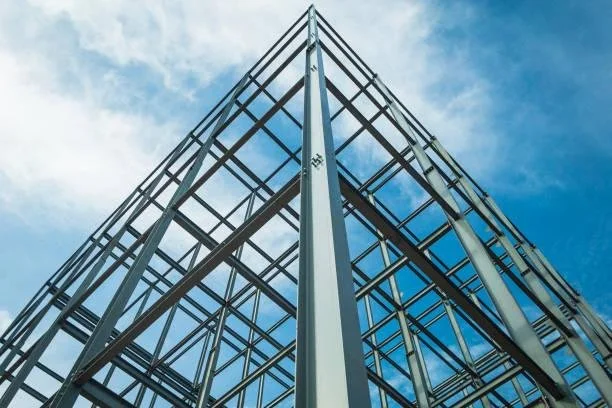Advanced Structural Strengthening Techniques for Long-Term Building Performance
Strengthening What Matters
As commercial buildings age, their structural systems are often pushed beyond original design limits, whether from material degradation, updated code requirements, or increased usage loads. When damage or deficiencies surface, property owners face a pivotal choice: repair or replace?
Structural strengthening offers a third, smarter option.
Rather than tearing down and starting over, advanced strengthening techniques reinforce existing systems, extending the building’s life span while minimizing disruption and cost. These methods preserve the value of your asset, maintain operational continuity, and often comply with today’s code requirements at a fraction of the cost of full reconstruction.
At Exactus Engineering, we bring a cutting-edge approach to structural rehabilitation. From carbon fiber reinforcement to steel jacketing and advanced underpinning systems, our team delivers proven solutions tailored to each building’s needs. With licensed structural engineers, deep commercial experience, and fast project turnarounds, we help building owners restore safety, performance, and confidence.
Carbon Fiber Reinforcement: Invisible Power, Maximum Impact
One of the most innovative methods in modern strengthening is carbon fiber-reinforced polymer (CFRP) wrapping. This lightweight, high-strength material is applied to structural elements like beams, slabs, and shear walls to dramatically increase load capacity, without adding bulk or weight.
Where CFRP Works Best:
Seismic Zones: Reinforce lateral load resistance in older buildings not built to current earthquake standards.
Parking Decks & Garages: Address corrosion and deflection in aging concrete slabs.
Interior Upgrades: Ideal where access or aesthetics make traditional steel reinforcement impractical.
Carbon fiber wraps are applied externally, bonded to cleaned concrete surfaces with epoxy adhesives. The result? A barely visible upgrade that can boost flexural and shear capacity by 40–200%, depending on application, while allowing buildings to stay open and operational during work.
Best of all, CFRP doesn’t compromise space or design intent. It’s a minimally invasive solution with a service life exceeding 30 years under proper conditions.
Steel Jacketing: Heavy-Duty Protection for Critical Loads
While lightweight solutions like CFRP are ideal in many cases, some structural elements demand more robust reinforcement. That’s where steel jacketing comes in—a time-tested method of encasing beams, columns, or walls in steel plates to restore or enhance load-bearing capacity.
Where Steel Jacketing Shines:
Industrial Facilities: Where equipment loads exceed original design specs.
Structural Retrofits: In buildings undergoing code-required upgrades for fire rating or seismic resistance.
Damage Repair: When concrete spalling, corrosion, or impact has compromised the capacity.
The process involves welding or bolting steel plates around an existing structural member. These jackets can be filled with grout or anchored directly, and can be configured for fire-rating and architectural finish where required. With careful engineering, jacketing can double or even triple the axial or flexural capacity of columns and beams without full replacement.
While it is a heavier and more space-consuming solution than CFRP, steel jacketing is often the only viable choice for structural members carrying concentrated loads or subject to critical failure modes.
At Exactus Engineering, we model the load paths and stress points before designing custom jacketing solutions. This ensures that retrofits are structurally sound, code-compliant, and constructed with minimal disruption to ongoing operations.
Foundation Underpinning: Securing Structures from the Ground Up
When structural distress begins below the surface, reinforcement must start at the foundation. Underpinning strengthens or stabilizes existing foundations by extending their load path to more stable soil or bedrock.
Common Triggers for Underpinning:
Soil Settlement: Leading to cracks, slope, or uneven floors.
Adjacent Excavation: Construction nearby can cause soil displacement or vibration-related movement.
Change in Usage: Converting a light-load structure (like an office) into a heavy-load facility (like a data center).
There are several techniques to address these issues, and the right one depends on site conditions and project constraints:
Helical Piers: Ideal for low-clearance areas; screwed deep into competent strata.
Micropyles: High-capacity drilled shafts, great for tight urban sites or deep soil instability.
Mass Concrete Pours: Traditional solution where access and soil conditions permit.
These systems transfer the building’s weight to stronger subsurface layers, reestablishing vertical stability without demolition or downtime.
Epoxy Crack Injection: Restoring Concrete from Within
Cracks in concrete are more than cosmetic—they can compromise structural performance, allow moisture ingress, and accelerate rebar corrosion. Fortunately, epoxy crack injection offers a highly effective way to restore both the integrity and appearance of damaged concrete.
Unlike surface patching, which merely covers flaws, epoxy injection re-bonds the internal fracture and restores original load paths. The result is a structurally sound section capable of withstanding forces close to its pre-crack condition.
When Epoxy Injection Makes Sense:
Structural Cracks: Where movement, loading, or seismic events have opened fissures in beams, slabs, or walls.
Moisture Entry Points: Prevents long-term water damage and rusting of embedded steel.
Pre-Rehab Stabilization: Secures damaged zones before additional strengthening or finishes.
Choosing the correct resin is key. Epoxy is used for dry, structural repairs with minimal movement. For dynamic or wet cracks, polyurethane or flexible gel systems may be more appropriate. That’s where expert evaluation makes all the difference.
We inspect the nature of each crack—its width, depth, and cause—before recommending and overseeing the injection process. We don’t just seal cracks; we solve the structural issue behind them.
Strengthening Masonry and Historic Walls with TRM
In buildings where preserving architectural integrity matters as much as performance, Textile-Reinforced Mortar (TRM) offers an ideal solution. This technique involves embedding high-strength mesh into a mortar matrix, applied over the surface of masonry or concrete.
Why TRM is Ideal for Sensitive Structures:
Historic Preservation: Strengthens aging brick or stone without altering appearance or profile.
Low Invasiveness: No anchors or drilling required—perfect for facades and heritage zones.
Broad Compatibility: Can be used over brick, block, or concrete with minimal prep.
Unlike shotcrete or steel retrofit systems, TRM adds negligible weight and remains breathable—important for older buildings where vapor diffusion and material compatibility are critical. Yet despite its lightness, TRM can improve shear strength and out-of-plane resistance by over 100%.
At Exactus, we often recommend TRM for buildings that require code upgrades (such as for seismic safety) but must retain visual or historical character. Our engineers design the mesh orientation, coverage, and mortar type based on performance needs and substrate condition.
Need help navigating code upgrades in heritage buildings? Reach out through our services page to start with a structural condition assessment.
Deciding Which Technique Is Right for Your Building
With so many advanced strengthening options available, selecting the right method can feel overwhelming. But the truth is, there is no one-size-fits-all approach—each technique serves a specific purpose depending on the building’s condition, function, and constraints.
Key Factors to Consider:
Structure Type: Concrete vs. steel vs. masonry systems respond differently to retrofits.
Occupancy Status: Some methods allow continued use of the building; others require temporary vacating.
Timeline and Budget: Some solutions offer quick, cost-effective reinforcement, while others are more robust but time-intensive.
Code Requirements: Seismic zones, fire ratings, or historic preservation laws may dictate allowable methods.
This is where a professional engineering assessment is essential. At Exactus, we conduct on-site evaluations, review original design documents, and consult with ownership and facility managers. Based on our findings, we prescribe a tailored strengthening strategy that balances performance, cost, and compliance.
Our goal isn’t just to patch problems, but to develop long-term solutions that align with your operational goals and capital plans.
Why Work With Exactus Engineering
Strengthening a commercial structure is a high-stakes undertaking. You need a partner who’s not only technically excellent but also understands your priorities as an owner, developer, or property manager.
Here’s what makes Exactus Engineering the right choice:
Licensed, Code-Savvy Experts: Every solution is designed by professional engineers familiar with IBC, ACI, ASCE, and local amendments.
Commercial Focus: From mid-rise offices to parking garages and industrial campuses, we specialize in performance-driven buildings.
Fast Turnaround: We understand that schedules matter, and we meet them without compromising quality.
Client-Centered Approach: We collaborate with your GC, architect, or facilities team to deliver integrated, practical outcomes.
Protect and Extend the Life of Your Building
If you’ve identified cracking, settlement, overloading, or simply want to prepare your structure for the next 20 years, now is the time to act.
Whether you need targeted reinforcement, a full-building assessment, or help navigating a retrofit to meet new codes, we’re here to help.
Schedule a consultation, our engineers will review your building’s needs and provide a clear, cost-effective path forward. Because the best way to handle structural failure… is to prevent it entirely.




